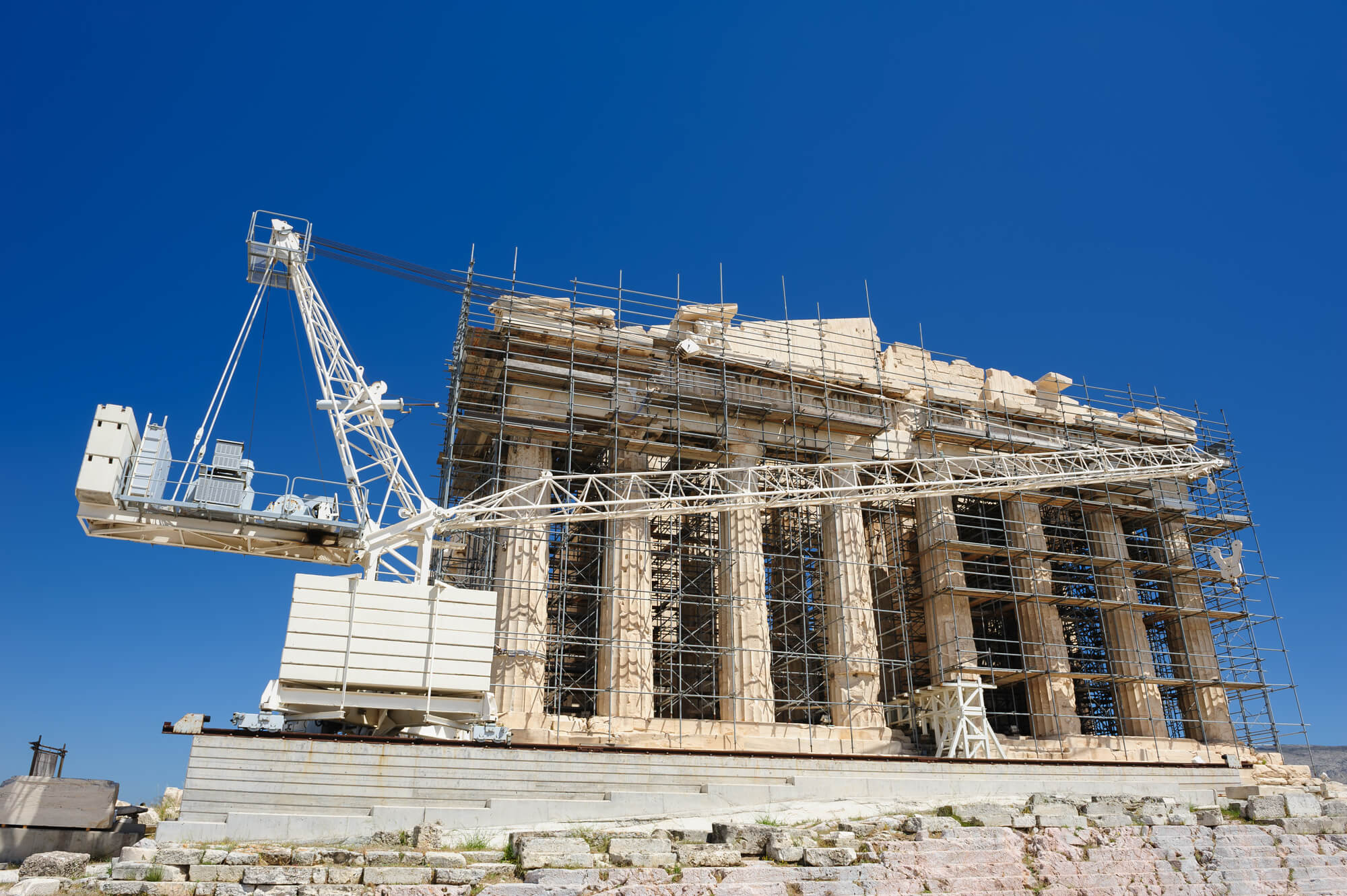From cave paintings discovered in Lascaux, south-western France, it’s believed that scaffolding was used to make them more than 17,000 years ago. Scaffolding has been around for as long as we started imagining complex and multi-storeyed buildings.

Who invented scaffolding
In 1900, Daniel Palmer-Jones, famously known as the ‘grandfather of scaffolding,’ brought modern scaffolding as we know it to life. This was possible with help from his brother, David.
The two brothers, Daniel Palmer Jones and David Henry Jones invented standard fixings used to secure both metal and bamboo scaffold poles, eliminating the risk of the components slipping. Thanks to their creative scaffolding system invention, they were awarded a contract to renovate the Buckingham Palace using the system.
Six years later, Palmer-Jones invented the ‘improved universal coupler‘ which is the standard pattern used in the scaffolding industry to date.
Scaffolding is a temporary structure designed to be as flexible as possible to enable works access to all kinds of buildings. This statement encapsulates the utilitarian and functional nature of scaffolding and scaffolding design. However, it fails to show how fundamental it has been throughout the history of construction. Our fascination with ancient and historic buildings is their almost miraculous construction.

Scaffolding in ancient times
Massive ancient structures required engineers to invent new types of scaffolding. Scaffolding should leave no mark on the building that it is supporting. However, unlike modern scaffolding techniques, historic buildings sometimes tell us about the invisible structures which must have existed. Gaps in masonry known as putlogs, for example, have left us clues to how these construction pioneers created their wonders.
On the other hand, monuments such as the mysterious and magnificent Pyramids of Giza have puzzled architectural historians for millennia. There’s documented evidence showing that the Egyptians used wooden scaffolding to build the pyramids. The scaffolding was stacked to the top of the pyramid and it was sturdy enough to support the workers.
In medieval times, abbeys and churches were built by monks who were trained to work as scaffolders. Known as scaffolder monks, the trend was also witnessed in the 20th century. Similar to Egypt and China, the romans also used bamboo and wood tied with ropes for scaffolding. For the Romans, they are pretty familiar with the block and tackle system.
There are many theories; architectural historians have imagined huge external ramps. More recently they have found evidence of smaller layered internal support. But ramps or not, modern conservation has shown that these highly skilled engineers and their workers relied on vast amounts of wooden mobile scaffolding.
Ancient scaffolding would have consisted of wooden poles lashed together with rope. Imagine the Acropolis of Athens, or the Coliseum in Rome. Is incredible to imagine these innovative Greek and Roman buildings as they were rising, supported only by wooden scaffolding. The vast weight and size of the building materials would have pushed scaffold load capacity to the max. The ancient equivalent of the project manager would have been a master of engineering. There would be new problems to overcome every day.

Challenges encountered in ancient scaffolding
One such problem occurred around 1400 in Renaissance Florence. Although the city’s medieval cathedral had a roof, after many decades the famous dome was still incomplete. Engineers debated whether there be enough wood in Tuscany to build a massive scaffold structure.
One legendary scaffolding idea was to build a mountain of dirt mixed with coins to be cleared away money-grubbing people when the dome was finished. Thankfully for posterity Filippo Brunelleschi managed without ground-based scaffolding, relying on innovative construction techniques and suspended scaffolding. Those early engineers changed their city skylines.
Scaffolding in modern times
As we have seen in London over the past few decades, impossible structures are made possible by safe and stable modern scaffolding and engineering techniques. You might not be building pyramids in the desert or coliseums in ancient capitals, but as a competitive and innovative London scaffolding company, we can offer you all types of scaffolding types to suit all construction, renovation, and reconstruction requirements.